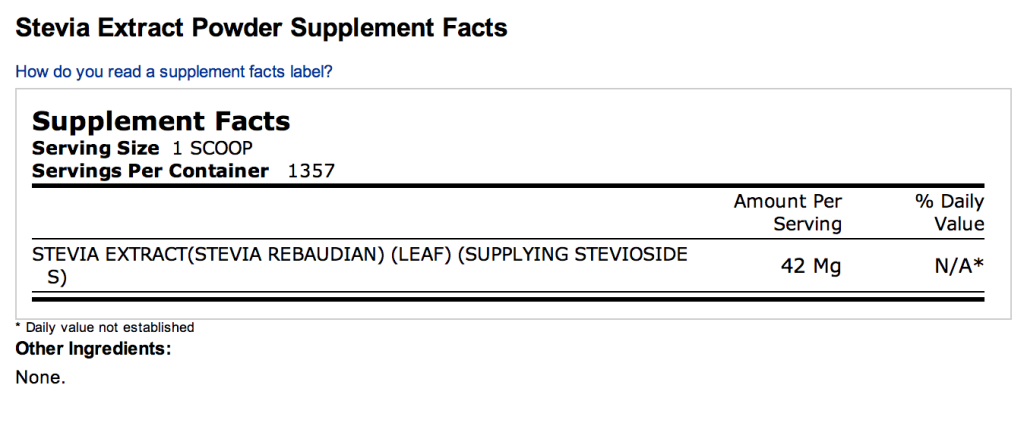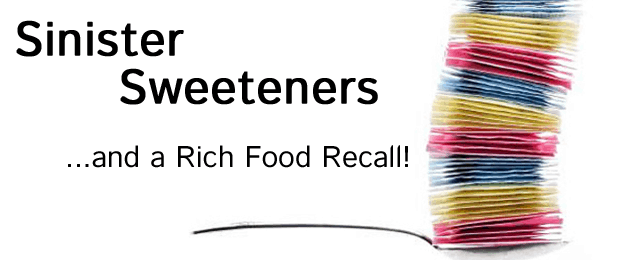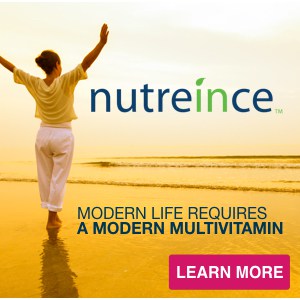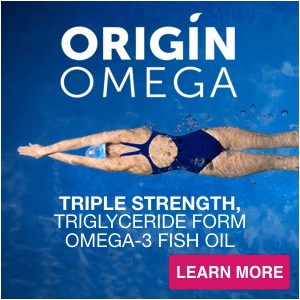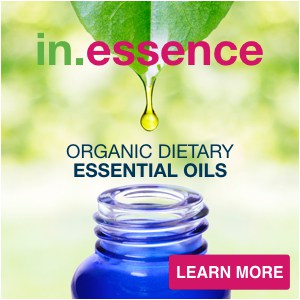We want you to meet sinister sweeteners and sugar substitutes! Artificial sweeteners are lurking in more and more products nowadays. We want to help you get acquainted with these sweet suspects and find out how they may be blocking your road to optimal health. Although these sugar substitutes don’t rob you of your micronutrients, scientific data suggests that they can be just as detrimental to your health. The top three offenders are listed below, along with their know aliases, where they can be found, as well as side effects and health issues they can cause. Our advice? Steer clear!
Sucralose
KNOWN ALIASES: Splenda, Sukrana, SucraPlus, Candys, Cukren, Nevella, and E955 (European Union)
RECENT SIGHTINGS: Pepsi ONE, Breyers CarbSmart Ice Cream, Maple Grove Farms, Sugar Free Syrup, Diet Rite Cola, Propel water, Diet V8 Splash
SUSPECTED OF: According to a Duke University study, sucralose decreased “good” gut bacteria by 50 percent. Your gut is home to 80 percent of your immune system, and these same bacteria can help fight heart disease, reduce cravings, and, best of all, aid in the absorption of your micronutrients. While it is the least criminal of the sugar substitute sweetener squad and deemed safe by the Center for Science in the Public Interest, avoid sucralose whenever possible.
NEW NEWS ON SPLENDA SAFETY:
Published in the journal Diabetes Care, Washington University School of Medicine in St. Louis researchers found that sucralose, most popularly known by the brand name Splenda, has effects on the body's responses to sugar (glucose) — which could increase diabetes risk — despite the fact that it has zero calories. Researchers found that consuming the sucralose was associated with higher blood sugar peaks and 20 percent higher insulin levels compared with consuming the water, though they noted more studies are needed to determine the actual health effects of a 20 percent increase in insulin.
Acesulfame Potassium
KNOWN ALIASES: Acesulfame K, Sunett, Sweet One, and E950 (European Union)
RECENT SIGHTINGS: Diet Rite Cola, Pepsi Max, Coca-Cola Zero, Fresca, Wrigley’s Spearmint gum, some SoBe products, and sugar-free Jell-O
SUSPECTED OF: This sweetener rarely works a job alone. You can frequently find it as an ingredient alongside sucralose or aspartame. It is known to increase insulin release and has been linked to thyroid tumors.
Aspartame
KNOWN ALIASES: NutraSweet, Equal, AminoSweet, Canderel, Spoonful, Equal-Measure, and E951 (European Union)
RECENT SIGHTINGS: Diet Coke, 7up Free, Ocean Spray On the Go Drink Mix, Yoplait Light Fat Free yogurts, Wrigley’s Orbit gum (all varieties), and more than six thousand grocery store products
SUSPECTED OF: Aspartame accounts for more than 75 percent of all adverse reactions to food additives reported to the FDA and has been well reported to cause neurological symptoms like dizziness, seizures, depression, breathing difficulties, and weight gain. Some studies have even linked it to cancer, epilepsy, Alzheimer’s, and multiple sclerosis. Aspartame contains metha- nol, which converts to formaldehyde—that’s right, the same stuff used to embalm a corpse. This offender should be avoided at all costs.
GUILTY OF: Spiking insulin and leptin levels! Remember that insulin is our fat storage hormone. This means that while you may choose this sweetener to lose weight, you may actually pack on the pounds. In Naked Calories, we learned that leptin is the hormone that tells your body you are full. Overstimulation of leptin makes your body “deaf” to its message that you are full, which is a dieter’s disaster because your body learns to ignore satiation.
So, what should you use to sweeten your life! Stevia!
If you haven’t yet heard of stevia, then you are in for a real treat because stevia is an all-natural sweetener that substitutes for sugar in almost any recipe. We actually grow stevia in our flower box and use the little green leaves in various dishes to add a touch of sweetness. You can pick up small seedlings at your local home improvement store’s garden center.
However, don’t be fooled by the different stevia products in most grocery stores—they are more like products that use stevia mixed with some kind of sugar base such as dextrose, maltodextrin, xylitol, or erythritol. While the xylitol or erythritol bases are better choices, we prefer pure stevia extract. The full name for stevia is stevia rebaudiana. If you see this as the only ingredient listed, you are looking at the real thing.
The stevia leaf contains compounds called steviol glycosides, which make it about thirty to forty-five times as sweet as sugar, but two of the glycosides—stevioside and rebaudioside—are approximately three hundred times as sweet as sugar. When most people taste stevia, they are surprised by how sweet it is. Stevia is fine for diabetics or even very low-carb dieters. In fact, some studies suggest that stevia can help reverse diabetes and metabolic syndrome and reduce hypertension.
Here is how it works. Rebaudiosides are metabolized into stevioside in the digestive tract, where it is broken down to glucose and steviol. The terrific benefit is all of the glucose is used by the bacteria in the colon and not absorbed into the bloodstream. Because steviol cannot be further digested, it is excreted by the body.
The stevia plant has been used in South America for more than fifteen hundred years and is widely chosen around the world as a safe, natural sweetener. It’s our number one pick! Warning: if you are allergic to ragweed, stevia may not be for you, as it is a close relative and can sometimes cause similar allergic reactions.
OUR VERY FIRST RICH FOOD RECALL EVER
AND OMG!!! We were duped too! Yes, even we forgot to read the labels on this one. You see, we wrote in Rich Food Poor Food that KAL stevia with the red cap was a great product – and it used to be. However, they altered the ingredients after lulling us into a false sense of security. They now contain maltodextrin- ICK! So you see, even good products go bad sometimes… which reminds us to recheck the ingredients list every now and again. They are a POOR FOOD stevia now for sure. You can see in the photo below an older label and a newer label. Yep… it is different but you would never see if it you weren't looking! 